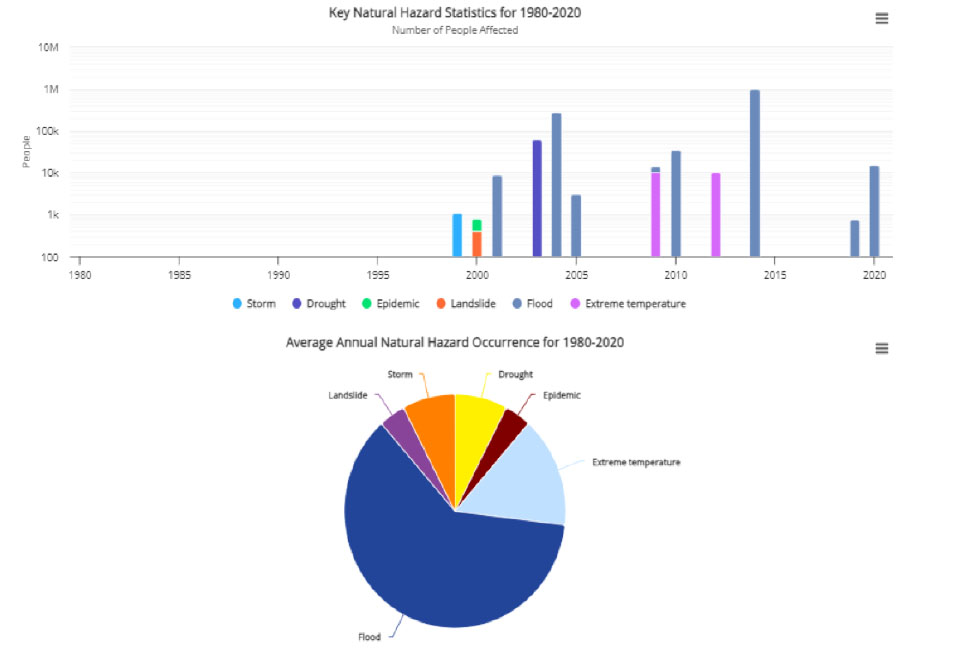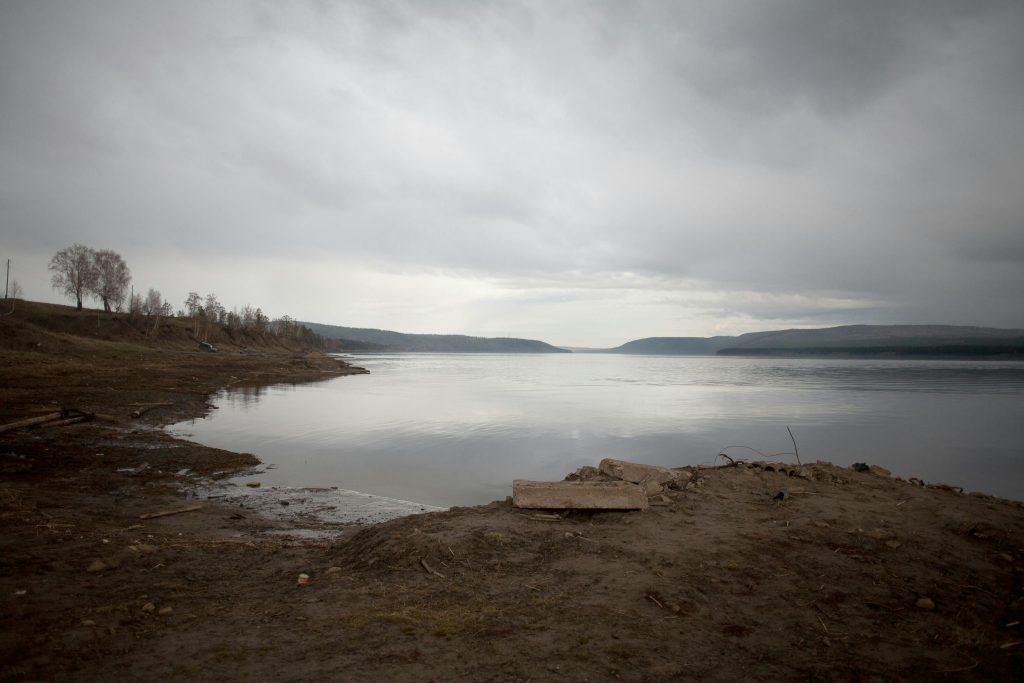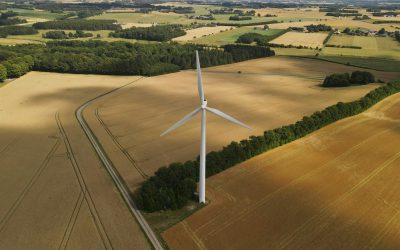Climate change- Bosnia and Herzegovina
Climate change poses a significant threat to global socioecological systems, with predictions of surpassing critical atmospheric warming thresholds by 2040. Bosnia and Herzegovina (BiH) faces intensifying climate challenges, including rising temperatures and extreme weather events. The devastating 2014 floods exemplify these climate threats. Economic and infrastructural constraints, compounded by a high unemployment rate and past conflict damages, hinder adaptation.[1] In May 2014, the worst flood in the country’s recorded history made an estimated 15% dent in national income in damages and losses. It also destroyed lives and livelihoods. Rivers swelled, mountains eroded, and disaster struck the country. Flooding ravaged towns and inundated newly-plowed fields. Landslides destroyed roads and other vital infrastructure. People fled their homes, seeking dry land and shelter. It was a preview of what was to come. [2]
In response to the May 2014 flood in Bosnia and Herzegovina the World Bank Group launched the $100 million Flood Emergency Recovery Project. The project will meet critical needs and restore functionality of infrastructure essential for public services and economic recovery—such as rural development, energy, transport, water and sanitation. But just as important, with projections of increased flooding as the climate changes, the project will provide technical assistance and capacity building to help build resilience against disasters. [2]
Amidst these transformations, it is crucial to recognize that children and young people will bear the brunt of the changing climate. As the future stewards of the environment and the upcoming decision-makers, their perspectives and actions are pivotal in addressing the climate crisis effectively. [1]
Bosnia and Herzegovina is at risk of hydrometeorological hazards and natural disasters, which are expected to primarily affect agriculture and human health, through seasonal flooding and periods of drought. The projected impacts of climate change make BiH increasingly vulnerable to natural hazards: droughts, heat waves, heavy precipitation, landslides, and floods. The most common natural disasters are associated with heavy rainstorms that may cause mudslides and flooding of large agricultural land, houses and industrial buildings, and lead to other changes in the environment. Droughts may become more frequent in some areas due to river runoff decrease or drying in the country’s lowland areas and increased demand and consumption from economic development and population growth. Climate change is expected to increase the risks and severity of natural disasters in BiH through more intense temperatures as well as rainfall patterns, prolonged heat waves, and water scarcity. [3]
The charts provide an overview of the most frequent natural disasters in a given country and understand the impacts of those disasters on human populations. [3]

In terms of international obligations on climate change mitigation and adaptation, BiH supports the principle of common but differentiated responsibilities. Economic and other specifics should be taken into account when determining the transition period for the transition to a low-carbon economy. The goal of the low-carbon strategy is to create synergies with the concept of developing new green businesses and the economy, the concept of a circular economy in which resources are used to the maximum, and waste generation is reduced to a minimum. Under the UNFCCC, Bosnia and Herzegovina is considered a non-Annex I Party, i.e. developing or transitional countries. The non-Annex I parties are not obliged to take greenhouse gas (GHG) emission reduction action but are encouraged to do so with financial support from developed countries. In this context, BiH participated in the Clean Development Mechanism (CDM) with three registered projects. In 2013, the Council of Ministers adopted The 2013-2025 Climate Change Adaptation and Low Emission Development Strategy for Bosnia and Herzegovina, whose strategic goal was to increase BiH’s resilience to climate variability and climate change, while preventing environmental degradation and gradually reduce greenhouse gas emissions. Integration into all relevant sectors is very slow, mainly due to a lack of knowledge and institutional capacity. [4]
Bosnia and Herzegovina’s size, varying topography and unique landscape, result in the country being characterized by several distinct climate types: temperate continental in the northern and central regions, colder climates for the sub-mountainous and mountainous, and an Adriatic climate and modified Adriatic climate along its coast. The country’s climate varies from a temperate continental climate in the northern Pannonian lowlands along the Sava River and in the foothill zone, to an alpine climate in the mountain regions, and a Mediterranean climate in the coastal and lowland area of the Herzegovina region in the south and southeast. These climate characteristics are influenced by the Adriatic Sea as well as local topography, particularly the Dinarides Mountains, which are located along the coast and run from the northwest to the southeast parallel to the coast. [3]
BiH has demonstrated its commitment to participate in global efforts aimed at mitigating and adapting to climate change by signing the Paris Agreement. As a contribution to the fulfilment of the Paris Agreement, it adopted the document ‘Intended Nationally Determined Contributions (INDCs)’ for the period until 2030. The document is based on previously adopted strategic documents, such as the Adaptation to Climate Change and Low Carbon Development Strategy of BiH, and the documents Second National Communication on Climate Change under the UNFCCC and the First Biennial Report on Greenhouse Gas Emissions under the UNFCCC. According to the scenarios developed within the INDC, the highest level of GHG emissions is reached in 2030, when according to the baseline scenario, 20% higher emissions are expected than the 1990 level of emissions. As an unconditional target of reducing GHG emissions, BiH has set a goal of a 2% reduction in 2030 concerning emissions according to the baseline scenario. The conditional target (with more international assistance) is to reduce emissions by 3% compared to 1990 emissions. [4]
References
[1] https://reliefweb.int/report/bosnia-and-herzegovina/learning-see-climate-crisis-children-and-young-peoples-perceptions-climate-change-and-environmental-transformation-bosnia-herzegovina
[2] https://documents1.worldbank.org/curated/en/494741468189532505/pdf/98220-WP-P148173-PUBLIC-Box393168B-pdf.pdf
[3] https://climateknowledgeportal.worldbank.org/country/bosnia-and-herzegovina/vulnerability
[4] https://unfccc.int/sites/default/files/resource/ENG_CC%20adaptation%20and%20Low%20emission%20development%20Strategy%20BiH%202020-2030.pdf



